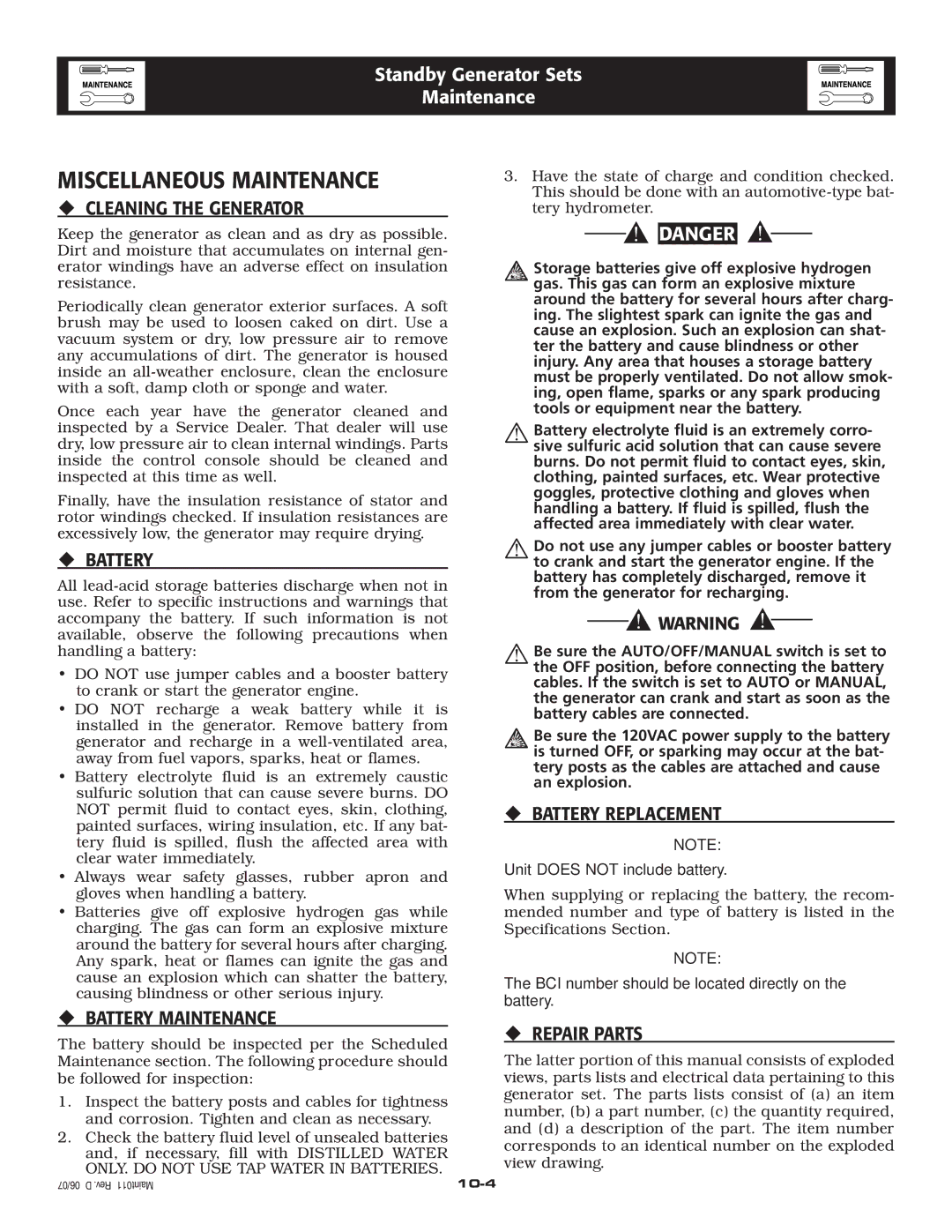1.6L 18 kW specifications
Generac Power Systems has established itself as a leader in providing reliable, high-performance energy solutions, particularly known for its innovative generators. Among its impressive lineup, the Generac 1.6L 18 kW generator stands out for residential and light commercial applications. This robust generator is designed to deliver dependable power during outages, ensuring peace of mind for homeowners and businesses alike.One of the defining features of the Generac 1.6L 18 kW generator is its powerful engine, engineered for performance and durability. With an 18 kW output, it is capable of powering essential household appliances, heating and cooling systems, and other necessary equipment. The generator’s advanced design includes an efficient 1.6L engine, which not only contributes to its high power output but also optimizes fuel consumption, providing a sustainable energy solution.
The generator is equipped with Generac's True Power Technology, which offers clean, stable power with low Total Harmonic Distortion (THD). This is crucial for protecting sensitive electronics and appliances from potential damage caused by power fluctuations. With this technology, users can operate delicate devices like computers and medical equipment without concerns about power integrity.
Another significant advantage of the Generac 1.6L 18 kW generator is its integrated Automatic Transfer Switch (ATS). This feature automatically detects power outages and switches the generator on within seconds, ensuring that users remain connected and protected during electrical disruptions. The ATS not only enhances reliability but also allows for seamless integration with existing electrical systems.
In terms of design, the Generac 1.6L 18 kW generator boasts a compact footprint, making it suitable for various installation options, including outdoor placements with adequate ventilation. Additionally, its quiet operation is an attractive feature for residential settings, minimizing noise pollution while maintaining performance.
The generator is user-friendly, with an intuitive control panel that provides real-time monitoring and diagnostics. This ensures that users can easily manage their power needs and keep track of the generator’s performance.
In conclusion, the Generac Power Systems 1.6L 18 kW generator offers a powerful, efficient, and dependable energy solution. With its advanced technology, automatic transfer capabilities, and user-friendly design, it effectively addresses the power demands of both homes and light commercial buildings, making it an excellent choice for those seeking uninterrupted energy supply.

